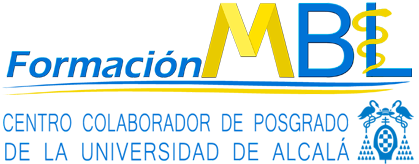
A new approach to detect cancer could take just ten minutes, a mobile phone and may be substantially cheaper than currently available ‘liquid biopsy’ tests, according to a new study.
Researchers at the University of Queensland discovered a unique DNA structure, which appears to be present in all cancer cells they tested, including those from breast, prostate, colorectal and lymphoma but not healthy cells.
The research published today in the journal Nature Communications details a new test which rather than looking for specific types of cancer and particular DNA mutations, may eventually be able to give a quick ‘yes or no’ answer, indicating whether further detailed and expensive diagnostics are needed.
‘“We certainly don’t know yet whether it’s the holy grail for all cancer diagnostics, but it looks really interesting as an incredibly simple universal marker of cancer, and as an accessible and inexpensive technology that doesn’t require complicated lab-based equipment like DNA sequencing,” said Matt Trau, leader of the research and Professor of Chemistry at The University of Queensland and co-founder of the Australian Institute for Bioengineering and Nanotechnology.
The researchers looked for tiny molecules called methyl groups, which are constantly added and removed to DNA by cellular machinery, acting as little beacons to switch genes on and off. Methyl groups are generally spread out across the whole genome, but cancer cells have intense clusters of methylation, which the team sought to detect.
They found that when they placed the DNA in a chemical solution, tightly-packed clusters of these methyl groups folded into particular nanostructures which then stuck to solid surfaces like gold, allowing them to be easily detected.
Methylation of DNA can be assessed across the whole genome by doing expensive sequencing to find out exactly how much methylation is present and precisely where, but this is the first such test to paint a simple overall yes or no picture of whether cancer is likely to be present using these methyl nanostructures.
“We designed a simple test using gold nanoparticles that instantly change color to determine if the 3D nanostructures of cancer DNA are present. “This led to the creation of inexpensive and portable detection devices that could eventually be used as a diagnostic tool, possibly with a mobile phone,” said Trau.
Methylation of DNA and it’s relevance to diagnosing cancer is a hot topic of research at the moment, with a paper in the journal Nature last month showing that methylation analysis of cell-free DNA could be potentially used to detect cancer in people with early-stage disease.
«Generally speaking, both liquid biopsy assays that look for epigenetic marks in the plasma or methods that look at tissue biopsies themselves generally tend to be based on next-generation sequencing, which calls for often very expensive, highly specialized equipment. The same is generally true of methods that look at other alterations that define cancers, such as mutations. This approach, in contrast, is markedly simpler in terms of technological requirements and may therefore be more widely applicable,» said Ankur Chakravarthy, joint first author of the Nature research and Guglietti fellow for cancer immunotherapy at Princess Margaret Cancer Centre in Toronto.
Like many currently available ‘liquid biopsy’ tests, the gold nanoparticle test uses cell-free DNA, that is DNA that cancer cells release into the blood plasma when they die. The new technology has shown a reasonable level of accuracy in discriminating between healthy and cancerous cells in initial tests, but much more work to refine this needs to be done before the test can be relied upon.
«Just how useful this test will be for routine clinical use will depend on extensive testing in the general population to see how often it gets things wrong,» said Chakravarthy.
It might seem counterintuitive for a test made from gold to represent any type of cost saving compared to other methods, but the tiny amounts used mean that the test may still be considerably cheaper than other biopsy tests.
«Given the current stage of the research, we don’t have an estimate yet of what such a test will cost at this stage. However, given the sheer simplicity of the test, the fact that it does not require a lab, the fact that it does not require conventional DNA analytical techniques (e.g., DNA sequencing, qPCR etc), we believe that it could potentially be much cheaper,» said Trau.
However, there are still some things to be worked on. Late-stage cancers often have far more circulating DNA in the blood plasma than early stage and are far easier to pick-up. The current study didn’t give much information about the stage of cancer of their samples, so its difficult to conclude that the test might be useful for diagnosing early-stage disease if much of the testing had been done on samples from patients with established, later-stage disease.
But, this new experimental test is not the same as liquid biopsies currently on the market, nor does it claim to be. The researchers have taken a different, more simple approach to the question of whether a person can get a yes or no answer to whether they are likely to have cancer or not without the need for expensive first-line testing.
«The early detection of cancer & the early detection of cancer recurrence are two areas where this test may find use, and where there is a strong need to move away from more expensive, less accurate and centralized systems such as mammography, PET, MRI etc,» said Trau.
The work is certainly at an early stage, having just been patented by the university who are looking to progress the translation of the technology into the clinic. But going for simpler approaches when most people doing cancer diagnostics with cell-free DNA in the blood plasma are constantly increasing the complexity of their tests and analyses, is fairly unique.
«To have discovered such a simple, and easy to detect, general marker for cancer, we believe is special,» said Trau.
Fuente: https://www.forbes.com



